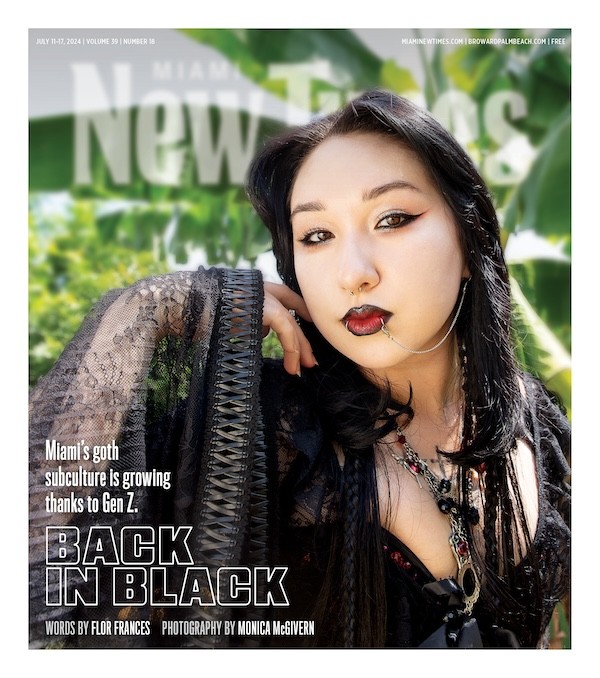Antonio Amadeo, local actor and impresario of the Naked Stage in Miami Shores, thrives on producing unique experiences at his 43-seat black-box theater and uses the space's limitations to his artistic advantage. This was never more apparent last year than in A Man Puts on a Play, Amadeo's debut as a playwright. The self-reflexive meta-play was a show like no other, a touching familial dramedy preceded by a semi-improvisatory exercise in set-design construction. In the first act, like magic, the ensemble cast transformed a bare stage before the audience's eyes into a fully functioning attic set, bolstered by their own light-hearted quips, endearing mistakes, and a potent jazz soundtrack. In the second act, whose dialogue was seen being rehearsed in the first, a simmering conflict between brothers played out in the now-constructed set. Anyone who didn't see this work missed an ingeniously sloppy experiment that revealed how at least some of the theatrical sausage is made.
Best World Premiere
A Man Puts on a Play
- 11300 NE Second Ave., Miami Shores, 33161 Map
- www.barry.edu/fine-arts/
Best Musical
Fela!
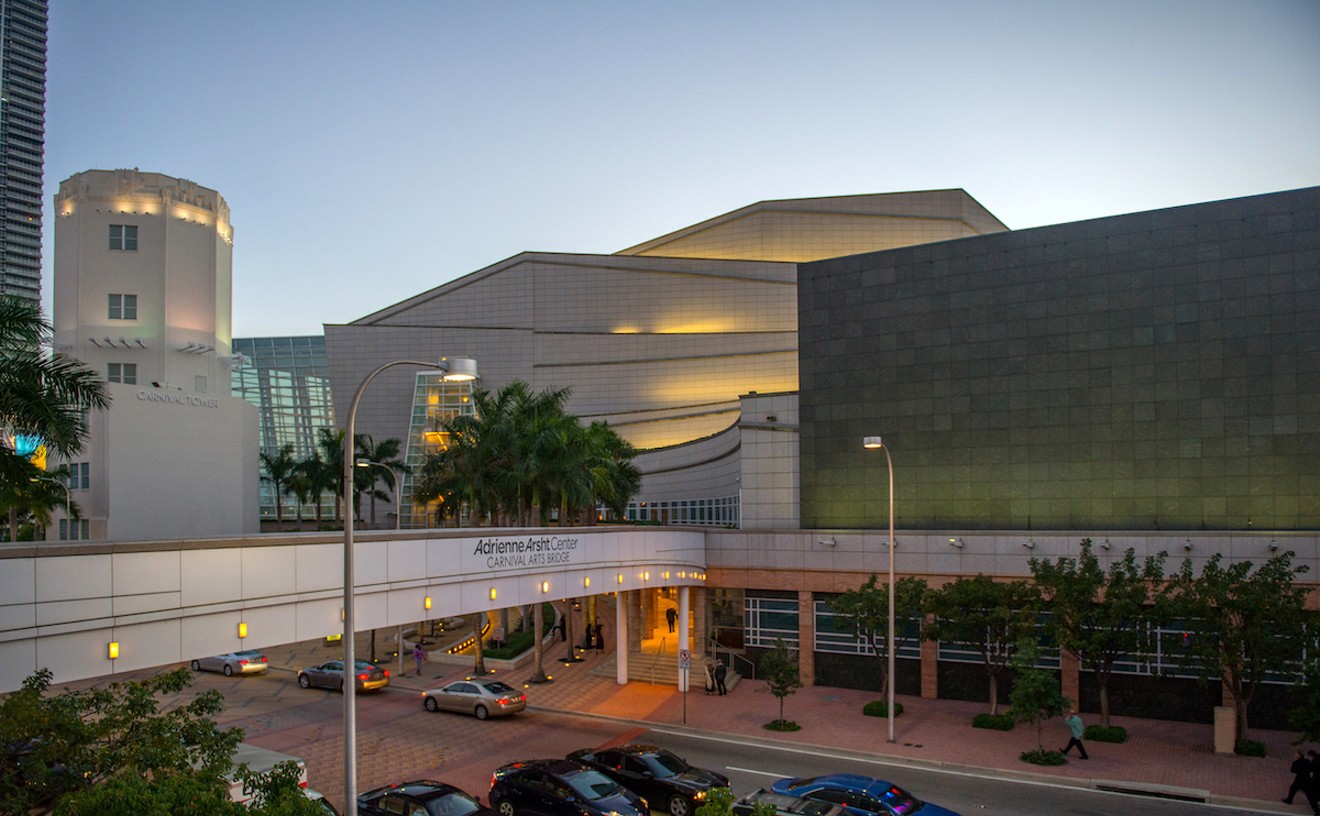
Never has an exclamation point seemed more necessary to a title than that of Fela! Broadway's high-energy celebration of the life and music of Afrobeat innovator, Fela Kuti (Adesola Osakalumi). It made its long-awaited premiere at the Arsht Center, which was transformed into a subversive Nigerian nightclub circa 1977. Chronicling the musician's rise from middle-class African family to student of black liberation theology and the controversial fusion of jazz, funk, and activism that soon accompanied it, Fela! was a history lesson about the Afrobeat genre as much as its charismatic inventor — albeit a history lesson complete with pot-smoking, booty-shaking, and more motherfuckers than a Samuel L. Jackson retrospective. The wonderful references to the injustices of News Corporation, Monsanto, and Citizens United only cemented the continued relevancy of its lessons. But more than its story, Fela! was a triumph in form, with the impossibly good ensemble of dancers and onstage band of musicians creating an atmosphere of infectious exuberance that spilled out into the audience when Osakalumi prompted the entire Arsht throng of Fela fans and soon-to-be fans to rise from their seats and practice African dance moves.
- 1300 Biscayne Blvd., Miami, 33132 Map
- 305-949-6722
- arshtcenter.org
Best Comedian
Yamil Piedra
A male model wearing only black briefs strikes a pose against a white background. To the sounds of dramatic dubstep, he flexes, spins, and broods as the black-and-white camera spares viewers no detail of his physique. No, this isn't Calvin Klein's Super Bowl ad. It's Miami comedian Yamil Piedra's recent parody. The model is Piedra himself, sporting a bald head, full beard, and — how to put this nicely? — a big, round gut to drum up exposure for his new show, The Pretty Rock Project. Piedra, along with Johnny Trabanco, once performed as A Pair of Nuts, a comedy duo known for making viral videos that closed out the South Beach Comedy Festival in 2012. Trabanco and Piedra have since split, but Piedra is still working that multimedia angle. In The Pretty Rock Project, he combines traditional stand-up comedy with sketches in which he plays everything from a Toddlers & Tiaras-style pageant girl to a failed Criss Angel wannabe. He's also incorporated video into the show, and it's as funny-'cause-it's-true as anything A Pair of Nuts ever did. (See Piedra's commercial for the Sexecutive Hotel on Calle Ocho, featuring luxury amenities such as "a garbage can for throwing away garbage" and "a door for coming in and out of the room.") Hilarious, diversely talented, and utterly shameless, Piedra has evolved into Miami's own one-man comedy cabaret. We'll take that over some pretentious supermodel any day.
Best Comedy Venue
Miami Science Museum
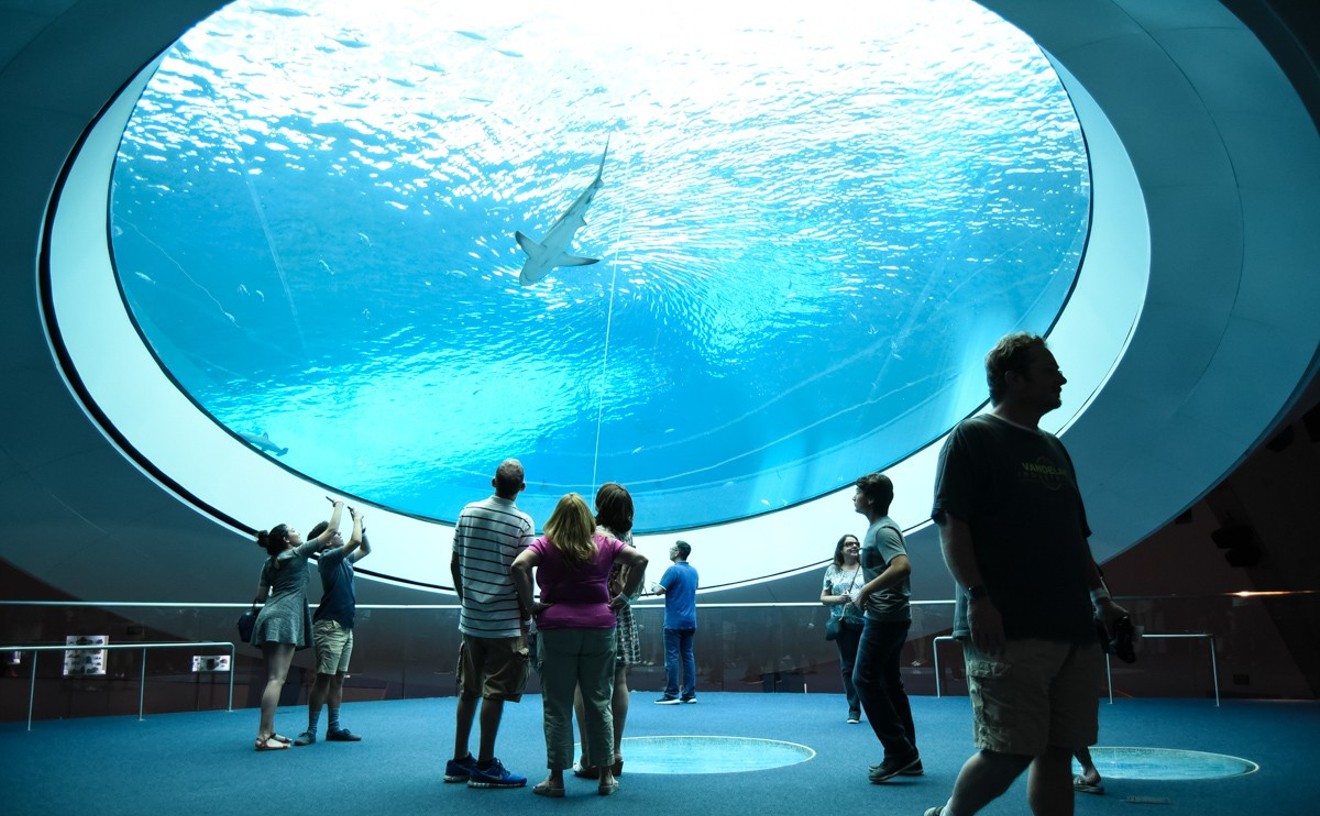
What do a comedy club and a science museum have in common? No, that's not the opening to a joke (not even a lame one). It's a question that reveals the best, least-known, and most surprising comedy venue in South Florida: the Miami Science Museum. In 2012, with the help of Have-Nots Comedy, the museum hosted some of South Florida's most popular stand-up acts. Denver comedian Ben Kronberg — who has appeared on Comedy Central and late-night shows with Jimmy Kimmel and Carson Daly — and Nikki Glaser, a Last Comic Standing alum who has graduated to the weekly MTV show Nikki & Sara Live, are among the out-of-towners who made pilgrimages to MiaSci last year. But the comedy on the science-surrounded stage skews heavily toward the 305. Case in point: It's where foulmouthed Cuban puppet Pepe Billete made his stand-up debut. Best Comedian 2011 winner Nery Saenz also brought the chuckles last year, as did Best Comedian 2012 Dave Williamson, who recorded his first live comedy album in the space. The Miami Science Museum is getting a new home in 2015, and it's unclear whether the space will continue to host local and visiting comics; it is, after all, moving into a building constructed solely for the serious subject of science. So you'd better catch a stand-up set at the current space before, like many of the species chronicled in the museum's exhibits, it becomes extinct.
- 1101 Biscayne Blvd., Miami, 33132 Map
- 305-434-9600
- frostscience.org
Best Party Venue
Historic Alfred I. DuPont Building
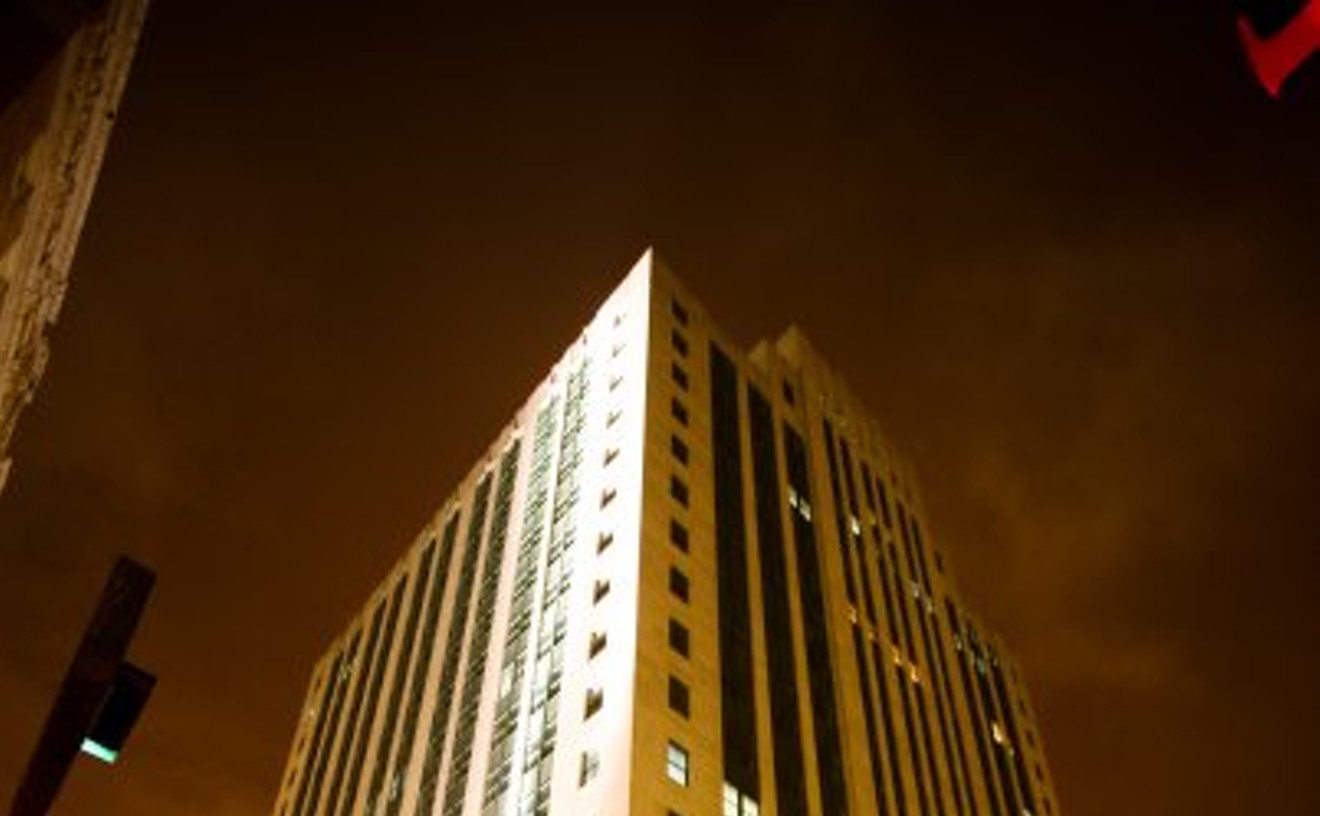
In 2010, when the human gremlin known as Lil Wayne got out of jail, Cash Money Records made sure to throw him the biggest welcome-home bash it could. But where can one host a party that is so quintessentially Miami without being cliché? Is there a place where the ironwork sparkles like gold grill in a rapper's mouth and the marble gives the bass that perfect echo? Yes, there is. It's the Historic Alfred I. DuPont Building. Opened in 1939, it is a perfect example of Depression moderne. Like the rest of America, Miami felt the blow of the Great Depression, and the DuPont Building signaled the city's return to its former glory (though Miami would suffer from many further economic meltdowns in the decades to come). Now the mezzanine level is one of the city's most spectacular event spaces. With 22,000 square feet available for everything from high-society events to a spoiled daughter's wedding, the DuPont Building never ceases to dazzle attendees with gilded elevator doors and former bank-teller brass gates with art deco touches. Even Tony Montana would approve.
- 169 E. Flagler St., Miami, 33131 Map
- 305-777-1637
- thedupontbuilding.com
Best Drag Queen
Missy Meyakie LePaige
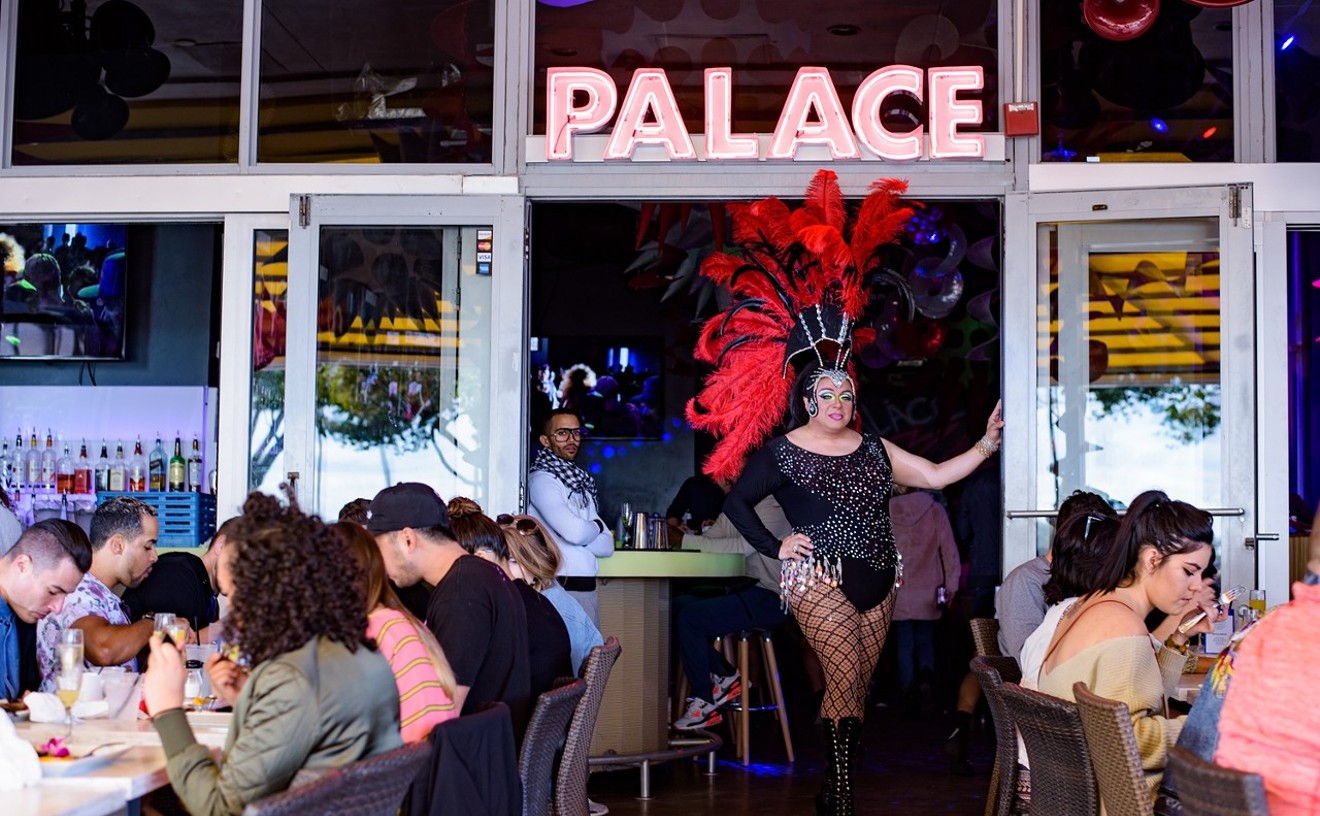
Missy Meyakie LePaige likes to start things off real nice and slow. She makes her grand appearance in a full-length coat. Strutting across the stage, she resembles not so much a runway model but a warrior queen ascending her throne. Don't be mistaken, though — that's not the show, because once the coat comes off, all bets are off. LePaige is the kind of performer who can kick a leg clear up to her face, twist 360 degrees, and land in a perfect split in one fluid motion. Did we mention she's more often than not doing this at Palace, South Beach's oceanfront LGBT wonderland? Oh yes, she's landing those splits and death drops right out on Ocean Drive's sidewalk. She's the kind of queen who has literally shut down traffic and rolled her body across the street. So when she performs (you can catch her multiple times a week at Palace), you better show up to pay tribute — and bring your tip money with you.
- 1052 Ocean Dr., Miami Beach, 33139 Map
- 305-531-7234
- palacesouthbeach.com
Best AM Radio Personality
Severe Livincoeur
WSRF is the first and only Haitian-owned radio station in the nation. Boasting 10,000 watts of AM power, it packs a lot of juice. Every Monday through Friday from 1 to 2 p.m. on his show, Explosion, Severe Livincoeur uses those airwaves to promote all of the Haitian music industry's rising stars. Monsieur Livincoeur doesn't just spin, though. He spikes his shows with interviews and discusses the best bands, hottest clubs, and latest tracks in lively Kreyol with a rhythm all its own. And his show's perfectly engineered and technically sound audio quality far outshines the competition.
Best FM Radio Personality
Mamey Disco
Mamey (as in the tropical ingredient found in Cuban batidos) is a vinyl-loving disco freak whose weekly show for FIU radio is called Supernature. While some DJs fill airtime with self-indulgent chitchat, Mamey Disco lets his music do the talking by artfully blending Miami's disco classics with the rarest of gems from his crate-digging exploits. Featuring a massive collection of freestyle, Miami bass, soul, funk, R&B, and early dance hits, Mamey's two-hour block is a commercial-free ride through boogie music at its best.
Best Spanish-language radio personality
Armando Pérez Roura
Like his lifelong foe Fidel Castro, Armando Pérez Roura refuses to fade quietly into the annals of history. The 85-year-old radio commentator is still the loudest voice of El Exilio hardliners manning the Spanish-language airwaves. Born January 11, 1928, in Mantanzas, Cuba, Pérez Roura began his broadcasting career when he was 15 years old. After fleeing the island in 1962, he quickly became one of Miami's first Cuban-American rabble-rousers. In the 1980s, Pérez Roura founded Radio Mambí, where he still hosts morning and afternoon programs with a single goal: toppling his country's communist regime. Earlier this year, Univision rechristened Radio Mambí's studio the Armando Pérez Roura Studio as recognition for his contributions. He refuses to retire until Cuba is free. At a time when Univision, which now owns Radio Mambí, is broadening the appeal of its Miami AM Spanish-language stations, Pérez Roura is one of the lone voices keeping conservative Cuban-American radio alive in Miami. His diatribes are laden with questionable hyperbole, such as regularly comparing the Cuban plight to the persecution of Jews in World War II. But it's that spooky, conspiratorial tone that makes Pérez Roura a rare gem of originality on the radio today.
Best TV News Anchor
Jackie Nespral
An outline of Jackie Nespral's perfectly coiffed bob might as well be the logo for NBC 6's news department. Just a year shy of her 20th anniversary at the station, Nespral is one of Miami's few longtime, on-air veterans left after a series of shakeups, firings, and retirements. She has anchored through a studio relocation, numerous co-anchors, and just about every major news story in South Florida over the past two decades. Perhaps she owes her longevity in this town to her Miami roots. She got her start in television as a model on Sábado Gigante, was an Orange Bowl queen, and has degrees from the University of Miami and Florida International University. She escaped for a few years in the early '90s to become the first Hispanic news anchor on American broadcast TV by hosting the weekend edition of Today. Ultimately, though, Miami pulled her back, and she's been here ever since. We all know what the J in WTVJ really stands for.




